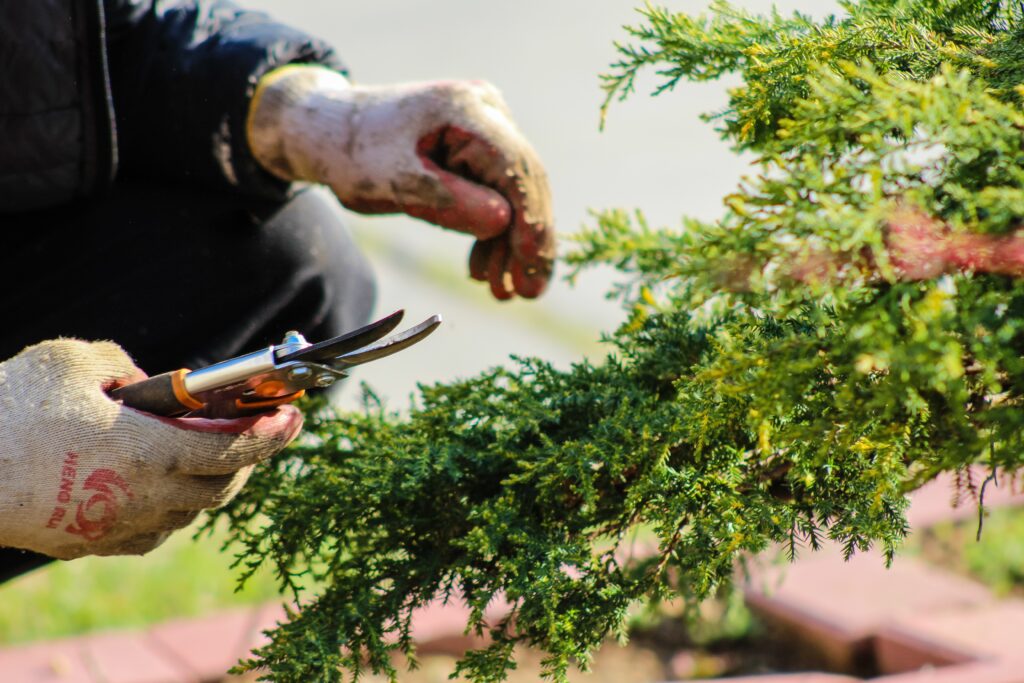Maintaining a beautiful landscape, whether it’s inspired by the elegance of the artistry of luxury landscape design company can be a gratifying venture. However, to ensure your outdoor space flourishes, it’s essential to grasp the do’s and don’ts of DIY landscape maintenance. In this article, we’ll provide valuable tips for nurturing your landscape while avoiding common pitfalls.
The Do’s of DIY Landscape Maintenance
- Plan with Purpose: Commence with a well-thought-out plan and specific objectives. Contemplate the landscape’s design, plant selection, and its potential evolution over time. Having a vision will guide your efforts effectively.
- Water Wisely: Proper watering is vital for thriving plants. Invest in a drip irrigation system or soaker hoses to ensure uniform moisture distribution. Be mindful of local watering regulations to conserve water resources.
- Mulch Matters: Apply mulch around your plants to conserve moisture, suppress weeds, and regulate soil temperature. This not only benefits your plants but also enhances the overall aesthetic of your landscape.
- Pruning and Trimming: Regularly prune and trim shrubs, trees, and hedges to maintain their shape and encourage healthy growth. Promptly remove dead or diseased branches to prevent issues from spreading.
- Fertilize Strategically: Utilize a balanced fertilizer to provide essential nutrients to your plants. Adhere to recommended application rates and schedules to prevent over-fertilization, which can be harmful. Fall is a crucial time for plants to focus on root development. Aside from applying fertilizer, controlling weeds is important to avoid competing for nutrients.
- Weed Control: Keep weeds at bay by employing organic mulch and using pre-emergent herbicides when necessary. Learn when to apply pre emergent in fall for the best weed control results. Hand-pull weeds as they appear to prevent them from taking root.
- Pest Vigilance: Monitor your plants for signs of pests or diseases. Employ environmentally friendly pest control methods, such as introducing beneficial insects or using neem oil, to protect your landscape’s health.
- Lawn Care: If you have a lawn, mow it regularly at the recommended height for your grass type. Aerate and dethatch when necessary to promote a lush and healthy turf.

The Don’ts of DIY Landscape Maintenance
- Avoid Overwatering: Resist the temptation to overwater your plants, as it can lead to root rot and other problems. Install a rain sensor on your irrigation system to prevent watering during rainfall.
- Know Your Climate: Don’t disregard your local climate when selecting plants. Choose species that are well-suited to your area’s weather conditions to ensure their survival and vitality.
- Soil Neglect: Soil health is fundamental. Don’t overlook soil testing and improvement. Amend your soil as needed to provide the right nutrients and pH levels for your plants to thrive. You can also consider composting to improve the health and structure of your soil.
- Planting Without Guidelines: Follow planting guidelines regarding spacing and depth. Overcrowding plants can result in competition for resources, while planting too deep can suffocate roots.
- Skipping Routine Maintenance: Consistency is key in landscape maintenance. Skipping essential tasks like pruning, weeding, or pest control can lead to more substantial issues down the line.
- Reckless Chemical Use: Avoid excessive use of chemical pesticides and fertilizers, as they can harm beneficial organisms and harm the environment. Always adhere to recommended application rates.
- Safety First: Safety should be a priority when using tools or equipment for landscape maintenance. Wear appropriate protective gear and strictly follow safety instructions for all equipment.
- Rushing Projects: Don’t rush landscape projects. Take your time to ensure meticulous planning and execution. Hasty work often leads to errors and costly corrections.
Landscape maintenance necessitates a range of tools to ensure the outdoor space remains in optimal condition. The exact tools required can vary depending on the size and complexity of the landscape. Some essential tools for landscape maintenance include a lawnmower for grass maintenance, a string trimmer to tackle areas the lawnmower can’t reach, pruning shears for shrub and tree upkeep, and a hedge trimmer for shaping hedges.
Rakes are vital for collecting leaves and debris, while leaf blowers help clear hard surfaces. Shovels and spades assist in digging and planting, and a garden fork is useful for soil maintenance. Wheelbarrows or garden carts are crucial for transporting materials, while garden hoes aid in weeding and cultivating. Lawn edgers create clean lines, and a sprinkler or irrigation system keeps plants watered.
To ensure plant health, a soil testing kit is essential. Safety gear, including gloves, protective glasses, and hearing protection, is necessary. Additional tools such as loppers and pruning saws handle larger branches and a garden trowel aids in planting. Various weeding tools help remove unwanted vegetation.
Lastly, tools like lawn fertilizer and mulch spreaders offer landscape care efficiency and convenience. Tailor your tool selection to your landscape’s needs, and always prioritize safety with appropriate protective equipment.
DIY landscape maintenance can be a fulfilling and cost-effective approach to preserving your outdoor space’s beauty, whether it draws inspiration from estate landscaping company like Petrus Landscaping in San Jose, California. By adhering to the do’s and don’ts outlined in this article, and by embracing landscape design principles, you can cultivate a stunning and flourishing outdoor environment. Remember, patience and consistency are your allies on your journey to create a landscape that mirrors the elegance and artistry of your unique surroundings.






